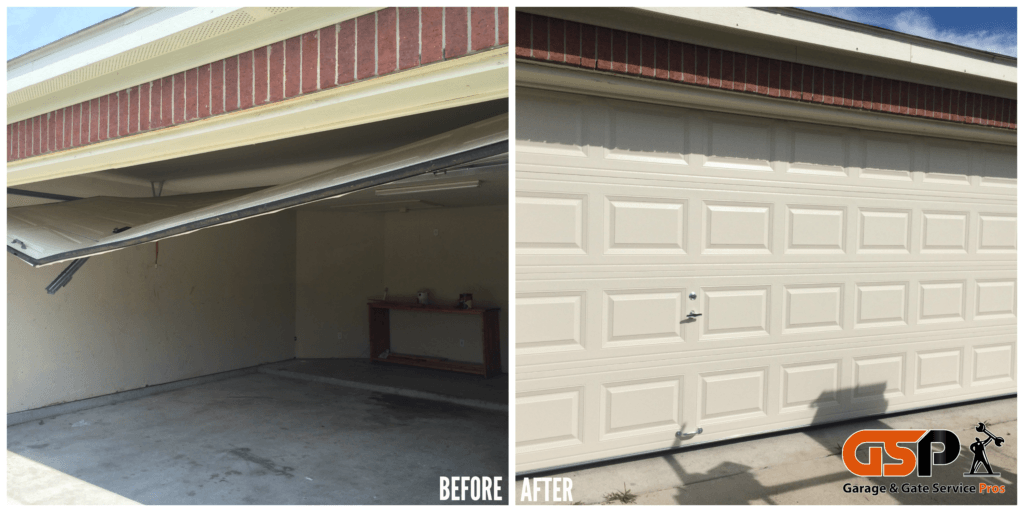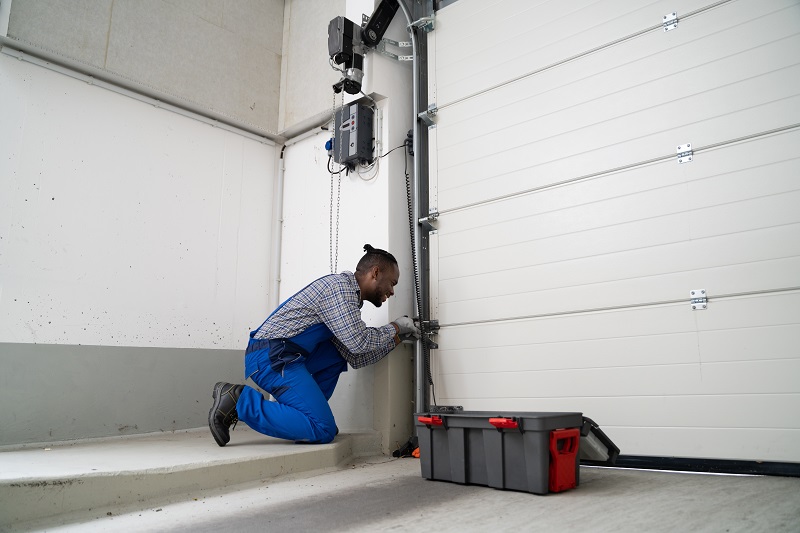Reliable Garage Door Service for Tune-Ups and Inspections
Reliable Garage Door Service for Tune-Ups and Inspections
Blog Article
Usual Garage Door Troubles and Just How to Repair Them
Garage doors are necessary for both protection and benefit, yet they commonly offer a selection of usual issues that can discourage house owners. Troubles such as excessive noise throughout procedure, doors that fall short to open up or close, misaligned tracks, and malfunctioning remotes can emerge without warning. While some issues might show up uncomplicated to solve, others may require a much more nuanced understanding of garage door technicians. Resolving these issues successfully not only improves performance but additionally lengthens the life of the door. One might question what steps are necessary to deal with these obstacles successfully.
Noisy Garage Door Operation
A loud garage door operation can be a considerable resource of aggravation for home owners, commonly indicating underlying mechanical issues. Such disturbances may come from various causes, including damaged rollers, loosened hardware, or insufficient lubrication. Identifying the source of the sound is essential for efficient resolution.
Over time, these parts can wear away, leading to grinding or squealing sounds as the door moves. Additionally, loose bolts or screws in the door system can create rattling noises during procedure.
One more contributing variable is inadequate lubrication of the door's moving parts. Using a top notch lubricating substance to the tracks, springtimes, and rollers can greatly decrease rubbing and noise. Homeowners ought to perform this maintenance periodically to maintain optimum performance.
Last but not least, the garage door opener might additionally produce noise because of its age or mechanical problems. If the noise persists regardless of dealing with various other variables, getting in touch with a specialist for a comprehensive assessment and prospective repair may be required.
Door Will Not Open or Shut
Experiencing a garage door that won't open or close can be incredibly irritating and usually indicates a breakdown within the system. Numerous variables can add to this issue, and recognizing the source is essential for effective resolution.

Following, inspect the safety sensors situated at the base of the door. These sensors can come to be misaligned or blocked by debris, avoiding the door from operating correctly. Clean the sensors with a soft fabric and ensure they are straightened.
Additionally, the garage door's internal parts need to be reviewed. Issues such as a busted spring, worn-out rollers, or a damaged opener can restrain motion. If any type of parts seem damaged, it may be recommended to seek advice from an expert for repair services.
Misaligned Tracks
(Effortless Process)Misaligned tracks can drastically interfere with the smooth procedure of a garage door, bring about operational failures such as unequal motion or full immobilization. This problem typically arises as a result of a selection of aspects, consisting of wear and tear, unintentional effects, or improper installment. When the tracks are misaligned, the rollers can stagnate openly, which not only stresses the electric motor yet also poses safety dangers.
To determine misalignment, visually evaluate the tracks for spaces or unequal spacing. If you observe any disparities, it is vital to attend to the concern immediately - garage door service. Begin by loosening the screws that protect the track to the wall surface, enabling modifications. Meticulously tap the track back into its appropriate position making use of a rubber mallet or a similar device, ensuring it is straight and level.
As soon as the placement is dealt with, retighten the screws to protect the track. For a more long-term solution, consider enhancing the tracks with extra brackets. Normal upkeep, consisting of cleansing the tracks and making certain rollers are in great condition, can stop future imbalances. By resolving misaligned tracks promptly, you can bring back the capability of your garage door and boost its long life.
Broken Springs
Among the numerous components of a garage door system, damaged springs are among the most typical concerns that can significantly impede its capability. Garage door springtimes are important for balancing the weight of the door, enabling smooth opening and closing. When a springtime breaks, it can result in a door that is hard to operate or, sometimes, entirely inoperable.
There are two main kinds of springtimes: torsion springs, which are installed above the door, and extension springs, located on either side. Indications of a busted springtime include a door that will not open up, a visible gap in the spring, or a loud noise during operation. Trying to run a garage door with a damaged spring can create additional damages to the door or the opener.
Repairing broken springs is not a DIY task; it needs specialized devices and experience as a result of the high stress involved. It is recommended to seek advice from an expert technician who can safely change the springs and make certain the door is effectively balanced. Normal upkeep and inspections can help stop spring failings and expand the life-span of the garage door system.
Remote Control Issues

The very first step is to inspect the batteries in the remote control. Replace them if they are weak or dead. If the remote still stops working to operate, inspect the garage door opener to make sure that its sensing units are clean and unobstructed. Dust, particles, or misalignment may impede the signal transmission in between the remote and the opener.
Interference from other digital devices can also hamper remote performance. Make sure that nearby tools, such as wireless routers or cordless phones, are not causing disruptions. garage door service. If interference is believed, attempt moving these tools even more away from the garage door opener
In many cases, the remote may require to be reprogrammed. Seek advice from the producer's standards to reset the remote control and synchronize it with Your Go-To Provider the garage door opener. If all else stops working and the remote continues to malfunction, think about getting in touch with a specialist technician for a thorough examination and possible substitute of the remote or opener.
Conclusion
(Emergency Availability)In recap, common garage door issues can dramatically affect capability and safety and security. Dealing with loud operation includes lubrication and tightening up equipment, while issues with opening or closing require assessment of source of power and sensing units. Misaligned tracks can be treated with adjustment, although busted springs necessitate professional intervention. Push-button control malfunctions typically arise from weak batteries or disturbance, which can be settled through substitute or reprogramming. Proactive maintenance and timely fixings can make sure ideal performance and longevity of garage doors.
Report this page